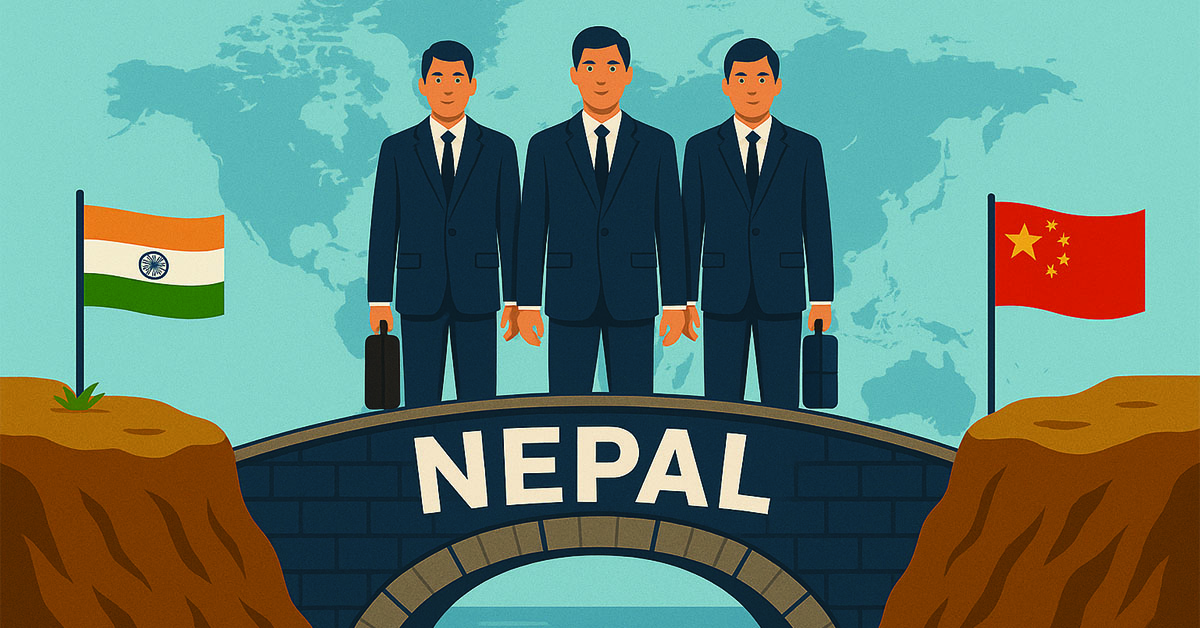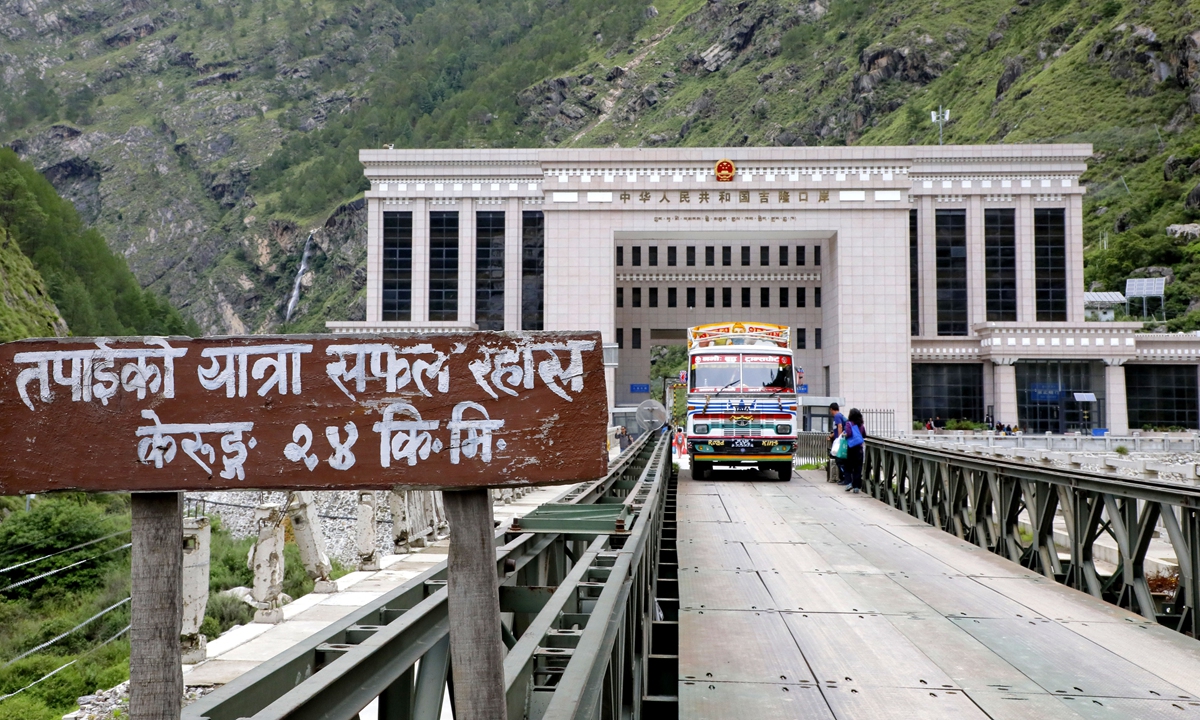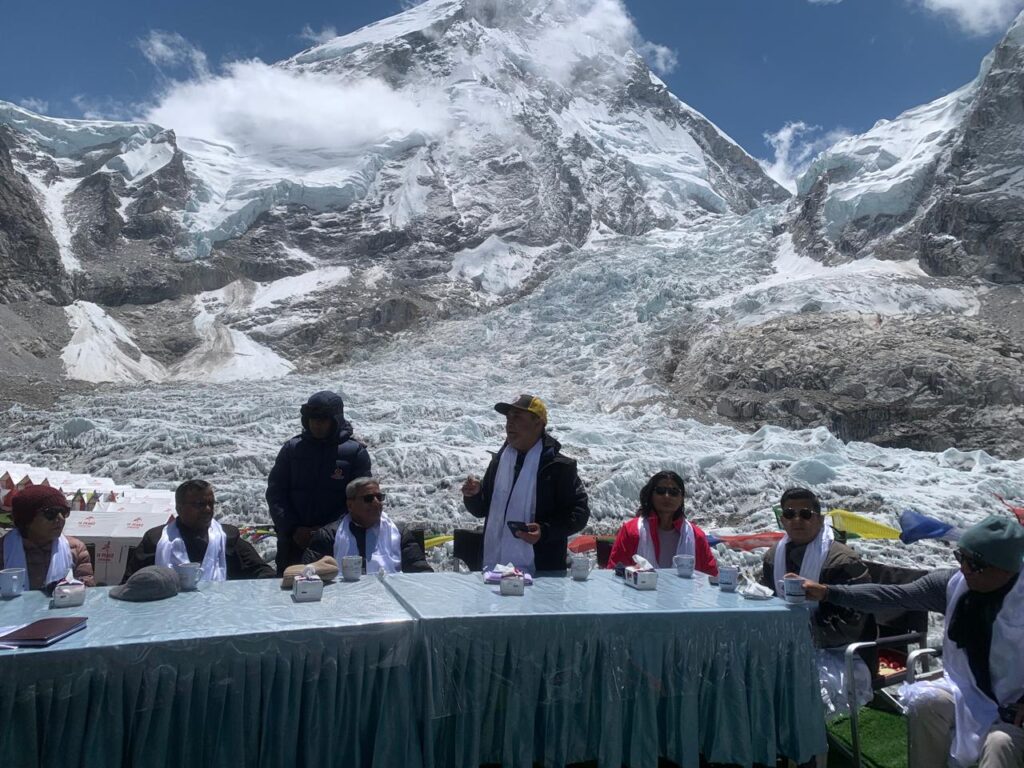
In today’s volatile world filled with uncertainties, conducting economic diplomacy and securing advantages from it remains a challenge for nations around the world – especially countries like ours in the Global South. Increasing emphasis on trade, tariffs, and mineral diplomacies have only added to these complexities.
This leads to an interesting question: How can Nepal overcome these challenges and utilize economic diplomacy to make way for economic prosperity?
Nepal officially ventured into the arena of economic diplomacy in 1996, marking a journey that now spans nearly three decades. Apart from labor remittances, Nepal has yet to fully capitalize on larger opportunities and achieve broader goals of economic diplomacy.
In the 17th and 18th centuries, Nepal (the then Kathmandu valley) was a crucial transit hub between India and Lhasa (Tibet). Indian traders would pass through Nepal on their way to Lhasa, which facilitated commerce between Nepal and Tibet, thus strengthening their ties through these early trade interactions, setting in motion the essence of ‘economic diplomacy’ – though the term was not used back then. However, Nepal has yet to fully realise the significant goals of economic diplomacy other than labour remittances.

Nepal, in the modern era, began taking steps toward economic diplomacy in 1996. That year, the Policy, Planning and Economic Analysis Division was established within the Ministry of Foreign Affairs to address various calls of economic diplomacy in modern times.
A 15-member task force was formed under the coordination of National Assembly member and former Foreign Secretary Uddhav Dev Bhatta. That task force submitted a report on February 7, 1996, recommending the creation of an Economic Relations and Coordination Division (ERCD) under the leadership of a special or additional foreign secretary.
The report stated that economic diplomacy had been included as a critical aspect of overall foreign relations, urging the government to prioritize and place economic diplomacy at the centre of foreign policy.
It was only in recent times that the Government of Nepal added the Economic Diplomacy Division to the Foreign Ministry. In the fiscal year 2009, the government began allocating a modest budget to facilitate MOFA and its missions to accelerate economic diplomacy practices. Nepal’s 31 embassies, three permanent UN missions (New York, Geneva, and Vienna), and nine consulates operate under financial and human resource constraints. Only around Rs. 16 million is allocated annually by the MoFA, which is not sufficient to invest in projects that could pave the way for foreign investment.
Despite these limitations, the missions continue efforts to promote Nepal’s economic interests via foreign investment, tourism, export trade promotion, development aid mobilization, and foreign employment management programs.
Former Finance Minister Yubaraj Khatiwada has remarked that economic diplomacy cannot be adequately handled by diplomatic missions alone. Khatiwada, during a recent public event, noted that a holistic approach should be adopted to deal with economic diplomacy, including trade, investment, climate diplomacy, fintech, and labor migration. He also underscored the urgency for Nepal to exit the financial grey list to attract foreign investment.
In the year 2017, the MoFA introduced a ‘Country Strategy for Economic Diplomacy’ outlining Nepal’s economic diplomacy approach toward 36 countries across the globe, including its two neighbours, India and China. The strategy serves as a guideline for newly appointed ambassadors, encouraging them to prioritize economic diplomacy during their tenure. To strengthen ties with China and to promote socio-economic cooperation, Nepal had established a Consulate General in Lhasa, in 1956.
Prior to that, a ‘lawyer’s office’ was operational in Lhasa from 1856, the main objective of which was to facilitate trade between Nepal and Tibet. Subsequently, Nepal expanded its consular presence in China, with offices now operating in Chengdu, Hong Kong, and Guangzhou. Other consulates are located in Kolkata, Texas, California, New York, and Jeddah—the latter focusing primarily on supporting Nepali labour migrants.
Former Ambassador Mohan Prasad Lohani, member of the 1996 task force led by Bhatta, has stressed the need to activate diplomatic missions to promote economic diplomacy. Nepal currently maintains diplomatic ties with around 183 countries in the world, presenting significant opportunities to activate economic diplomacy with the right resources and policies in place.
However, it is essential for missions – that face ongoing challenges due to budget and staffing constraints – to collaborate with the Nepali business community and diaspora to achieve economic goals.
A recent report from the High-Level Economic Reforms Commission, led by former Finance Secretary Rameshwor Khanal, identified foreign investment as a key area for economic growth. In fact, foreign aid accounted for about 14.5% of Nepal’s total estimated budget of $14.1 billion for fiscal year 2024/25, underscoring the role of economic diplomacy.
In January, Foreign Minister Arzu Rana Deuba reaffirmed Nepal’s commitment to economic diplomacy as an integral part of foreign policy while briefing chiefs of Nepal’s diplomatic missions abroad. The foreign minister underscored the importance of fostering foreign investment and promoting Nepal’s economic potential globally, adding that Nepali missions need to focus on the promotion of economic diplomacy, exploring areas that drive investment and growth, and the protection of Nepali migrant workers.
Nepal’s Foreign Policy-2077 document also outlines the importance of economic diplomacy. It defines economic diplomacy as the use of economic tools to pursue foreign policy goals, including trade negotiations, foreign aid coordination, labor mobility, and investment promotion. The policy notes that the COVID-19 pandemic has added new challenges to these efforts.
At present, Nepal aims to promote economic diplomacy at the bilateral, multilateral, and regional fronts.

Economist Biswash Gauchan, executive director of the Institute for Integrated Development Studies, argued that Nepal needs to broaden its economic diplomacy beyond its immediate neighbors, and move beyond the over-reliance on tourism and hydropower. According to Gauchan, Nepal should shift its focus toward a knowledge-based economy and prioritise the service sector for long-term development. “Our resource allocation has been inefficient for years. It’s time for a major policy departure,” he said.
While Nepal’s two neighbours—India and China—rank among the world’s largest economies, Nepal has yet to fully capitalize on her growth, capitalising the neighbours’ prosperity.
Bhojraj Poudel, head of the Institute for Government and Public Affairs, recommended adopting a soft-power approach suited to small nations. He proposed five strategies to strengthen economic diplomacy in the 21st century.
Foremost, Paudel suggests investing in human capital to enhance the capability of the state actors as well as the workforce and making them more competitive so that FDI inflow increases, as investment goes after talent.
Secondly, Nepal should focus on cementing relations with key countries and leveraging neighbours’ large markets to enhance trade and investment opportunities.
According to Paudel, leading regional organisations such as BIMSTEC (Bay of Bengal Initiative for Multi-Sectoral Technical and Economic Cooperation) can help Nepal leverage collective bargaining power and promote regional economic integration.
Next, he states Nepal can establish itself as a talent supplier by lobbying to have more leadership roles for Nepali citizens in multilateral institutions.
And finally, investing in improving infrastructure, such as transportation and communication networks can facilitate trade and attract foreign investment, and emphasise sustainable practices in economic policies that can attract environmentally conscious investors and enhance Nepal’s global image as a land of nature and organic lifestyle.
As Nepal strives for Prosperous Nepal, Happy Nepali, expanding and refining its economic diplomacy will be essential to achieving long-term development goals.